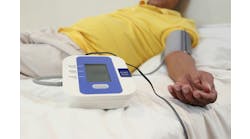Texas-based Superior HealthPlan is partnering on a home health program with MedArrive, a company that deploys paramedics and EMTs to reach people with complex care needs. Executives with Superior and MedArrive spoke with Healthcare Innovation about the goals of the program, which is expected to reach approximately 40,000 plan members.
The MedArrive care management platform connects pre-identified Superior members with MedArrive's field provider network of paramedics, EMTs and other healthcare professionals. They provide a mix of in-home healthcare services, diagnostics, health assessments and other preventive health measures. When higher-acuity care is needed, field providers can connect members with physician-led telemedicine services and can address other needs such as transportation issues, mobility challenges and nutrition assistance. These teams also will be able to connect members with virtual behavioral health services provided by Brave Health through a recently announced integration.
Superior, a subsidiary of Centene, serves 1.7 million members statewide across Medicare, Medicaid, and the ACA marketplace. In March 2022, MedArrive announced a similar arrangement with Molina Healthcare of Texas.
Superior HealthPlan Director of Virtual Care Tracy Rico, M.H.A., R.N., said she saw the partnership with MedArrive as offering a better opportunity to help people in their home. “I love the virtual care concept because we could get into people's homes, but now we can get into people's homes physically, in addition to virtually, so it brings all of those things together. It allows us to really see the environment and helps us understand what members need and the best way to help them, because we haven't had that visual before,” she said. “This allows us to really become partners in that member’s healthcare journey, and teaches them how to advocate for health for themselves and how to ask us for the resources that we make available but we haven't been able to share with them because we haven't gotten to them.”
Dan Trigub, co-founder and CEO of MedArrive, spoke about his company’s experience working with similar programs in Texas and elsewhere. “This population is often the most disengaged, forgotten, underserved population. They are often not engaged with a primary care physician. When we're in the home, we can survey the environment and identify the needs,” he said. “Our providers have great bedside manner; they know how to ask the right questions, do those SDOH surveys and that environmental assessment, and then make sure they get those needs addressed as quickly as possible.”
He said the field providers work with MedArrive’s case management team, “and we'll be working with Superior’s case management team to make sure we can address these needs. I'd say 20 percent of our work is chronic condition management — COPD, CHF, diabetes. The vast majority of the work, 70-plus percent, is more SDOH-driven. A lot of this a doctor or clinician would never know and the truth is, many of these people are relying on the emergency department. They're crashing into the ED and using it as a PCP when frankly the vast majority of the time they don't need to be going to the ED.”
Rico said Superior has resources available once non-medical drivers of health have been identified. “One of the key components here is that the paramedics that they use are actually in the community and know what resources are available in the community, so it's more meaningful than just a list on the internet,” she said. “We empower them by letting them know all the programs that we can participate in and all the resources that we can provide. They can let us know what's going on and we'll figure out a way to help.”
Rico spoke about the improvements they are hoping to measure once the program launches in January. “I think that we're going to see a reduction in the number of visits to the ER and inpatient stays. And if there is a need for an inpatient stay, it'll be shortened because they aren't starting from scratch. They've got something in place and they already are connected to their specialist and they can continue to follow up that way. I think we'll also see that since we're targeting members that are typically diabetic or with CHF, we can look at those metrics and say all of these people started with this a1c level and now that they've had access to the proper resources and the proper doctors and they've had the education and all of the broadband literacy components, their a1c levels have reduced. We're also looking for engagement metrics. Are they communicating with us more regularly? Are they participating in our programs more regularly? Are we able to reach them to let them know that we have a remote patient monitoring solution or a nutrition program for them?”
Trigub said MedArrive’s customers are largely Medicaid managed care plans, Medicare Advantage plans, and some ACOs. “We want to power care programs into the home for them to better serve those they care for. There are two areas that we're laser-focused on: one, how do we lower total cost of care and improve health outcomes primarily for managed Medicaid populations? And really what it comes down to is ED diversion programs. How do we power care into the home to avoid those unnecessary ED admissions? And then the second area of work for us, is around care gap closure programs.”
He added that the company can have a big impact in rural communities, given the workforce that it is tapping into and its nimble staffing model. “Our approach is taking a very asset-light, CapEx-light approach to delivering these programs. What we really excel at is the logistics, the staffing, the scheduling, creating efficiencies with our labor supply. Every county, every Zip code has EMTs and paramedics already in those markets, and we've developed a way to partner with local EMS, partner with staffing companies and also hired directly on our platform. With this approach, we can be in those rural markets faster than most.”


